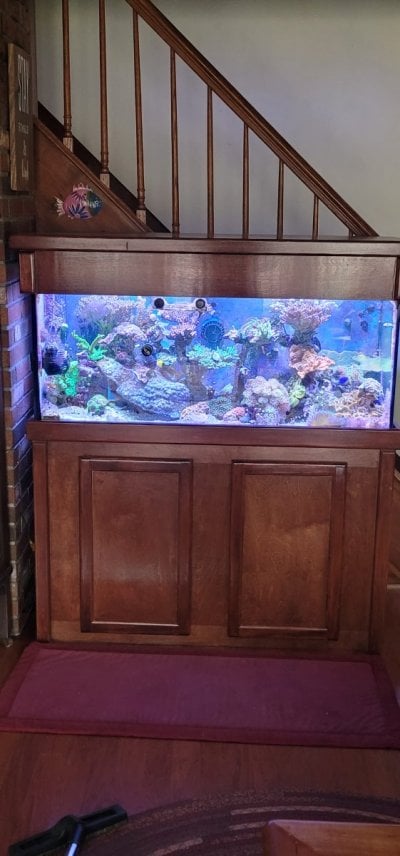Yeah, don’t think I’ll find that anywhere!Where you gonna find that in a bottle tho?
I just setup a temporary stand for an untouched 40/B in my garage. I probably won’t even plumb it. I’ll just throw a Aquaclear HOB on it, some air-stones, and a heater. Mount three Radion XR15’s above it. I ordered 10lbs of KP Aquatics LR to kick it off. Will ship next Tuesday for Wednesday delivery. Then I’ll quickly cycle the tank and start the process of moving frags and cutting corals off the scape so that I can hopefully save the majority of the corals and get them out of the toxic environment they’re in now. I want to start the recovery process, and see if I can color them up again. I was fragging the tank a lot before the treatment trying to keep it manicured to keep some corals from stinging each other, but also sold about 2K+ $$ Fragz locally, because I needed some groceries, but here’s a pic of the system before the treatment just after I dropped the power filters in.
I think I’ll completely shut this tank down and give it a acid bath, then vinegar, rinse it out really well, run some carbon, fill it back up, change the calcium reactor media, and cycle it again using 40-60lbs of KP LR, but also build another custom scape with maybe AF or Caribsea rock using Cyanoacrylate water-thin super glue, aragonite sand, E-Marco Mortar, and some DIY Portland cement pegged disks for every single acro. It will be a little process, but hopefully the corals aren’t too far gone to where they can’t recover. In the meantime, hopefully everything will fit in the 40B.



















